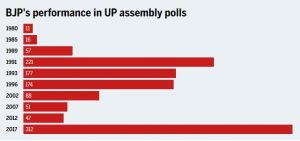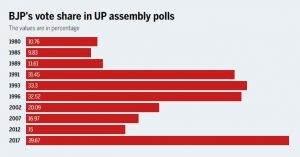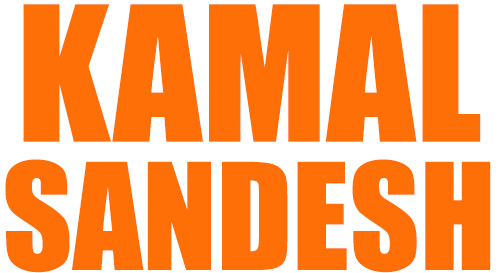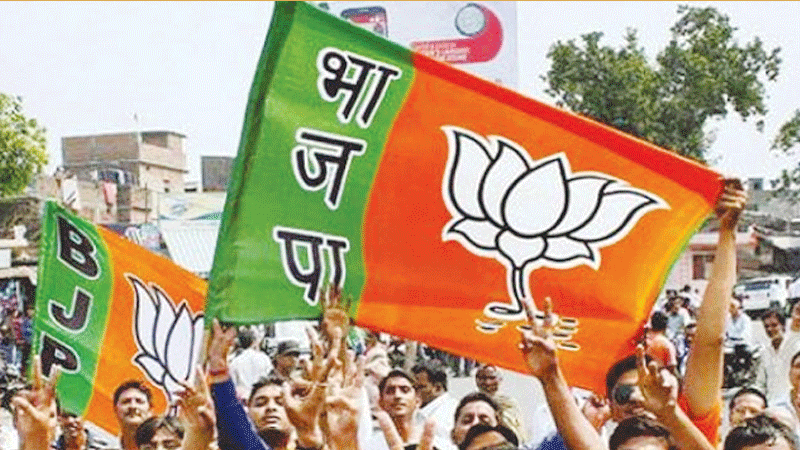With the announcement of election dates by the Election Commission of India (ECI) on 08 January 2022, the stage has been set for the high-stake 2022 electoral battle in Uttar Pradesh. The announcement of poll schedule has surcharged the political heat in all election bound states of the country, including Uttar Pradesh.
According to the announcements by the ECI, Uttar Pradesh with a total of 403 assembly seats will vote in seven phases, starting February 10 through March 07, 2022. The second phase of UP elections will be held on February 14th, third phase on February 20th, fourth phase on February 23, 5th phase on February 27, 6th phase on March 03, and the 7th and last phase will be conducted on March 07. Voting will take place in 58 assembly constituencies in the first phase, 55 seats in the second phase, 59 seats in the third phase, 60 seats in the fourth phase, 60 seats in the fifth phase, 57 seats in the sixth phase, and the remaining 54 seats in the last and seventh phase on March 07. The counting of votes and declaration of results is scheduled to take place on March 10.
As per the existing political equations in the state, the BJP led NDA, will fight the election battle with its alliance partners – the Apna Dal and the Nishad party, while the opposition Samajwadi Party has announced a tie-up with Shivpal Yadav’s PSP (L), Mahan Dal, OP Rajbhar-led SBSP, RLD, and the Apna Dal faction of Krishna Patel. However, the Congress, BSP, AIMIM, and AAP are going solo in the assembly polls.
The BJP has welcomed the announcement of elections for the state assembly and has launched an aggressive election campaign seeking a verdict for a straight second term based on its stupendous achievements and improved governance delivered over the last five years, notwithstanding the damaging global impact of COVID-19. BJP is not leaving any stone unturned to return to power with an overwhelming majority, that no Party has achieved in recent decades. The party has already released its candidates list for Phase 1 and 2 polls. The first list of 105 candidates also includes Chief Minister Yogi Adityanath and Deputy CM KP Maurya. The party has fielded CM Yogi Adityanath from his bastion- Gorakhpur while Deputy CM Keshav Prasad Maurya will fight from the Sirathu seat in Prayagraj.
HISTORIC BJP VICTORY IN 2017
In 2017 assembly elections, the BJP stunned its critics by scripting a historic victory in the state – winning 312 assembly seats with a vote share of nearly 40 per cent. This was BJP’s best ever performance in Uttar Pradesh since it got into the electoral fray in the state in 1980. In 2017, the party not only won the maximum number of seats

but also registered its best-ever vote share and the best strike rate in the state. If we look back, the election data shows that the party got 11 seats and 10.76% votes in 1980, 16 seats and 9.83% votes in 1985, 57 seats and 11.61% votes in 1989, 221 seats and 31.45% votes in 1991, 177 seats and 33.3% votes in 1993, 174 seats and 32.52% votes in 1996, 88 seats and 20.09% votes in 2002, 51 seats and 16.97% votes in 2007, 47 seats and 15% votes in 2012, and 312 seats and 39.67% votes in 2017 assembly elections respectively.

The hallmark of the 2017 assembly elections in Uttar Pradesh was the number of seats the BJP gained and also the huge loss of seats for the Samajwadi Party (SP), which was ruling the state from 2012. While the BJP gained 272 seats, the Samajwadi Party lost 188 seats. The BSP and the Congress were the other major losers in the electoral battle of 2017. The 2017 elections in Uttar Pradesh put the BJP on the top in the run up to the 2019 Lok Sabha elections. The BJP won 62 Lok Sabha seats in the state helping the party secure a huge victory in the 2019 national elections.
‘BHARATIYA JANA SANGH’ DAYS
The political journey of the BJP in Uttar Pradesh from its early days as Bharatiya Jana Sangh to becoming the largest political party in the state is quite thrilling. The Bharatiya Jana Sangh (BJS), the predecessor of the BJP, emerged as one of the main opposition parties in the 1960s and 70s in Uttar Pradesh. Throughout the 1960s, the Bharatiya Jana Sangh maintained a vote share of 16-17%. During this time the Jana Sangh was busy preparing its support base across the country, particularly in Uttar Pradesh. Several prominent leaders worked on the ground in Uttar Pradesh to increase support for the party. In the 1962 assembly elections, Jana Sangh fielded 397 candidates in the 431 seat assembly. In the next elections, 377 candidates contested the elections. On both occasions, the party won 49 seats.
SAMYUKTA VIDHAYAK DAL (SVD) GOVERNMENT
In the 1967 elections, the Congress tally fell to 199— short of majority in the 426 seat Assembly and the Bharatiya Jana Sangh, won 98. Kisan leader Chaudhary Charan Singh won the Chhaproli seat by over 52,000 votes and broke with the Congress to form his Bhartiya Kranti Dal (BKD). He was backed by socialists Ram Manohar Lohia and Raj Narain, and Jana Sangh’s Nanaji Deshmukh— and was, in April 1967, sworn in as Chief Minister at the head of the Samyukta Vidhayak Dal (SVD), a coalition ranging from CPI (M) on the left to Bharatiya Jana Sangh, with the Republican Party of India, Swatantra Party, Praja Socialist Party and 22 Independents in between. This was BJS’s first taste of power in Uttar Pradesh. In February 1968, Charan Singh resigned and recommended dissolution of the assembly.
After a year of Central Rule, elections were held in 1969. The Bharatiya Kranti Dal (BKD) won 98 seats and Jana Sangh, 49. Congress won 211 in the 426 member House. The Congress still remained short of a majority by 2 seats but Chandra Bhanu Gupta of Congress returned as Chief Minister.
PERIOD OF UNCERTAINTY
In the next eight years till 1977, Uttar Pradesh saw four stints of President’s Rule and six Chief Ministers including Charan Singh, who stayed in the office for little over nine months.
THE JANATA PARTY EXPERIMENT
Following the withdrawal of the Emergency in 1977, several opposition parties, including the BJS, merged under the banner of the Janata Party to contest the Lok Sabha elections. After the Janata Party won the 1977 Lok Sabha election, Morarji Desai’s government sacked Congress state governments, including ND Tiwari’s government in UP.
In the 1977 Uttar Pradesh elections that took place in June after a spell of President’s Rule, Jana Sangh joined hands with the Janata Party which won 352 of the 426 seats. The Jana Sangh, as part of the Janata Party, participated in Ram Naresh Yadav’s June 1977 to February 1979 government and BJS leaders Shri Kalyan Singh became Health Minister and Shri Keshari Nath Tripathi was in charge of Institutional Finance.
In February 1980, soon after coming back to power at the centre, Smt. Indira Gandhi sacked the Janata Party government in Uttar Pradesh.
To be continued ……………


